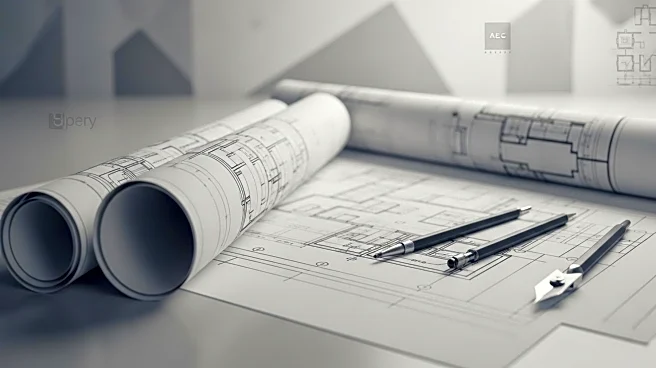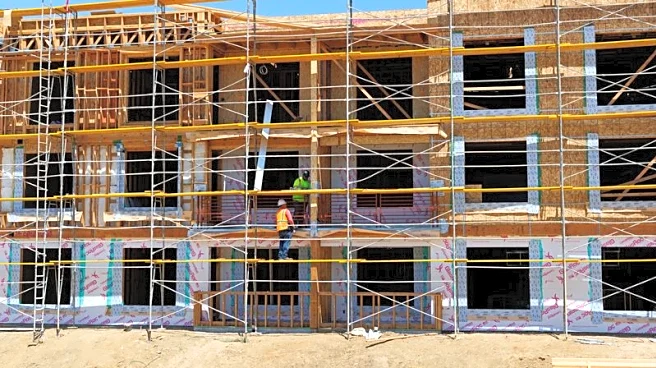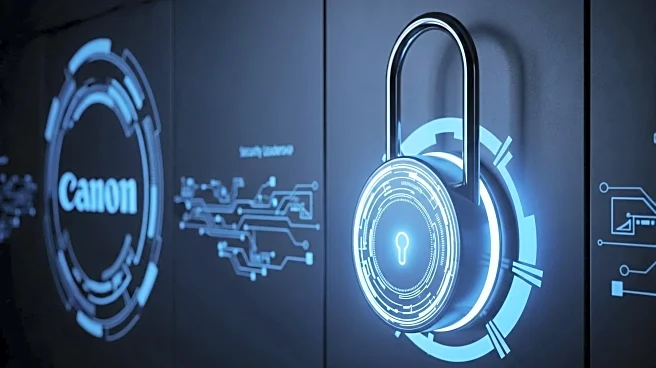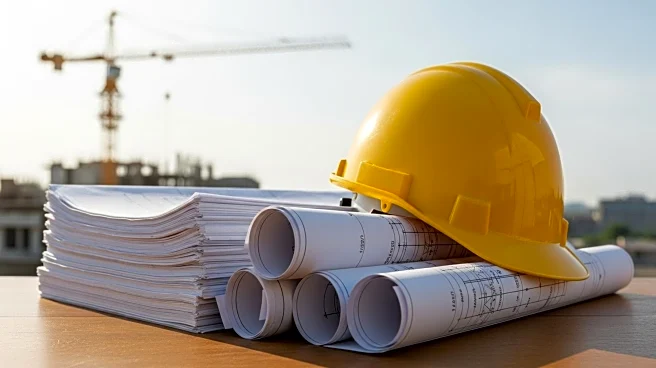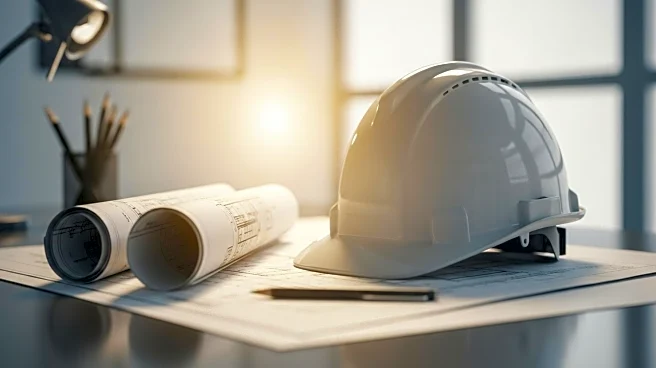What's Happening?
The architecture, engineering, and construction (AEC) industry is increasingly adopting the design-build delivery method to improve project efficiency and reduce costs. Traditionally, the industry has separated design and construction processes, which can lead to miscommunication and delays. The design-build approach integrates these processes, allowing for faster project delivery and better cost management. According to the Design-Build Institute of America (DBIA), design-build is expected to account for 47% of U.S. construction spending by 2028, amounting to approximately $2.6 trillion. This method has proven to deliver projects 102% faster and with 3.8% less cost growth compared to traditional methods. Notable examples include Qcells' U.S. manufacturing operations and the New York City Department of Design and Construction's public projects, which have benefited from reduced timelines and cost savings.
Why It's Important?
The shift towards design-build in the AEC industry is significant as it addresses the growing demand for efficient and cost-effective construction solutions. With tighter budgets and faster timelines, construction owners are under pressure to deliver projects that meet customer expectations while remaining competitive. The design-build method offers a streamlined approach that reduces risks and enhances collaboration among project teams. This can lead to substantial savings and improved project outcomes, benefiting both public and private sectors. As the U.S. construction market continues to evolve, embracing innovative delivery methods like design-build could be crucial for maintaining industry viability and competitiveness.
What's Next?
As the design-build method gains traction, more AEC firms may adopt this approach to meet the demands of complex building projects. Stakeholders, including construction owners and industry leaders, are likely to explore further integration of design-build practices to enhance project delivery. The DBIA's efforts to promote this method could lead to increased adoption and further studies on its effectiveness. Additionally, as more real-world examples demonstrate the benefits of design-build, industry hesitance may decrease, paving the way for broader acceptance and implementation.
Beyond the Headlines
The adoption of design-build methods may also influence the cultural and operational dynamics within the AEC industry. By fostering closer collaboration between design and construction teams, this approach could lead to more innovative solutions and improved project outcomes. Furthermore, as the industry moves towards integrated delivery methods, there may be a shift in how projects are managed and executed, potentially leading to new standards and practices that prioritize efficiency and collaboration.
